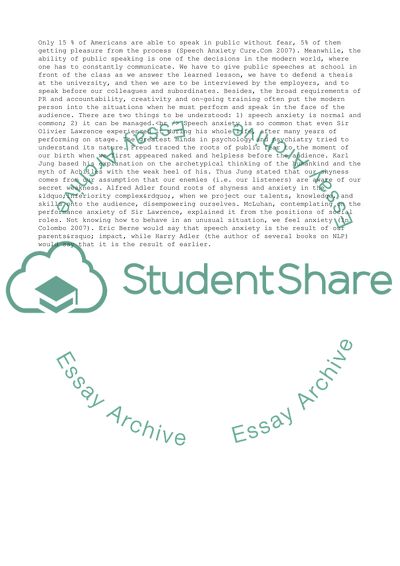Cite this document
(Speech Anxiety: Causes and Management Assignment, n.d.)
Speech Anxiety: Causes and Management Assignment. Retrieved from https://studentshare.org/management/1710432-speech-anxiety
Speech Anxiety: Causes and Management Assignment. Retrieved from https://studentshare.org/management/1710432-speech-anxiety
(Speech Anxiety: Causes and Management Assignment)
Speech Anxiety: Causes and Management Assignment. https://studentshare.org/management/1710432-speech-anxiety.
Speech Anxiety: Causes and Management Assignment. https://studentshare.org/management/1710432-speech-anxiety.
“Speech Anxiety: Causes and Management Assignment”, n.d. https://studentshare.org/management/1710432-speech-anxiety.


